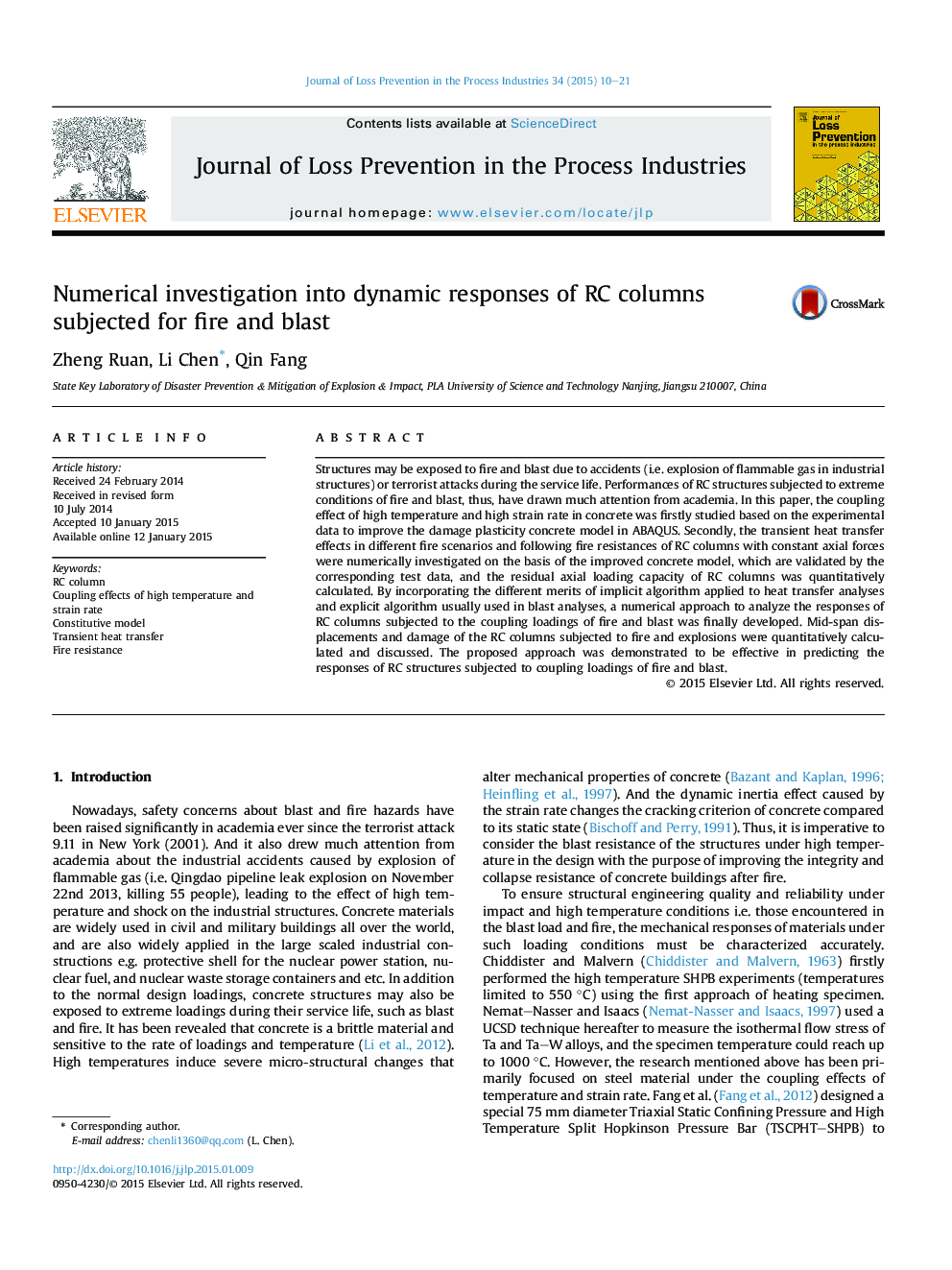| Article ID | Journal | Published Year | Pages | File Type |
|---|---|---|---|---|
| 585990 | Journal of Loss Prevention in the Process Industries | 2015 | 12 Pages |
•DIF of concrete under elevated temperature was studied using a MATSHPB apparatus.•Damage plasticity concrete model was improved based on testing and existing data.•A method was developed to analyze the responses of RC column under blast and fire.
Structures may be exposed to fire and blast due to accidents (i.e. explosion of flammable gas in industrial structures) or terrorist attacks during the service life. Performances of RC structures subjected to extreme conditions of fire and blast, thus, have drawn much attention from academia. In this paper, the coupling effect of high temperature and high strain rate in concrete was firstly studied based on the experimental data to improve the damage plasticity concrete model in ABAQUS. Secondly, the transient heat transfer effects in different fire scenarios and following fire resistances of RC columns with constant axial forces were numerically investigated on the basis of the improved concrete model, which are validated by the corresponding test data, and the residual axial loading capacity of RC columns was quantitatively calculated. By incorporating the different merits of implicit algorithm applied to heat transfer analyses and explicit algorithm usually used in blast analyses, a numerical approach to analyze the responses of RC columns subjected to the coupling loadings of fire and blast was finally developed. Mid-span displacements and damage of the RC columns subjected to fire and explosions were quantitatively calculated and discussed. The proposed approach was demonstrated to be effective in predicting the responses of RC structures subjected to coupling loadings of fire and blast.
